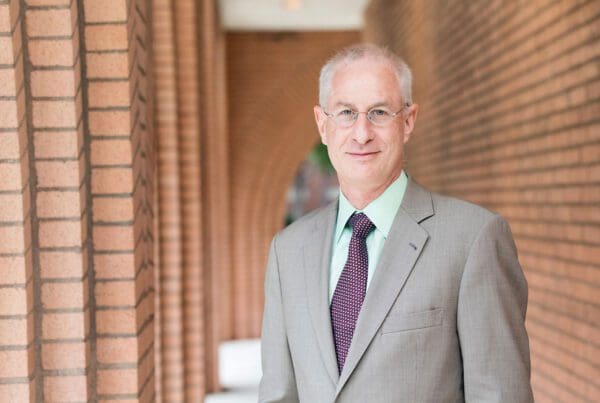Earlier this year, a former manager of the late Marvel Comics creator Stan Lee appeared in a Los Angeles courtroom and pled not guilty to multiple counts of elder abuse, including charges that in the last year of Lee’s life, he held the older man against his will and stole from him. That court appearance made national news, but celebrities are far from the only people affected by elder abuse. As this high-profile case winds its way through the legal system, it is bringing attention to an issue that is all too common and often misunderstood.
One in six older adults worldwide is believed to be a victim of some form of elder abuse, according to a 2017 World Health Organization (WHO) study. The research, led by Yongjie Yon PhD ’17 and conducted as part of his doctoral dissertation, defined the mistreatment as falling into several categories: psychological, financial, neglect, physical and sexual. It also found that contrary to public perception, men — like Lee — are just as vulnerable as women.
The impact is real: According to a WHO fact sheet, abuse victims tracked over 13 years were twice as likely to die during that time compared to those who had not reported abuse. In addition, the WHO notes that elder abuse injuries in the U.S. result in medical costs of over $5 billion each year.
“There is growing interest in elder abuse, now that we know it is high prevalence,” says Kate Wilber, professor at the USC Leonard Davis School of Gerontology and co-director of the National Center on Elder Abuse, which is housed at the Keck School of Medicine of USC. “People are finally noticing that this is a problem.”
If they are indeed noticing, it has much to do with Wilber and her work. Her Secure Old Age Lab at the USC Leonard Davis School has been a leader in elder abuse research for more than 30 years. Along with current and former students and campus and health care collaborators, Wilber is working to increase awareness of, and develop evidence-based interventions for, this very complex issue.
Uncovering Abuse
Despite data showing high rates of abuse occurring in homes, assisted living facilities, nursing homes and other community settings, only a small number of the estimated 5 million annual cases of elder abuse in the United States are reported.
“Some older adults may be reluctant to acknowledge that they are victims because of embarrassment, fear of being taken from their homes, loyalty to family members and a mistrust of authority figures,” says Wilber.
Knowing that people with lower incomes, education and levels of English language ability are even less likely to come forward, Wilber and her team set out to improve the identification of elder mistreatment in low-income, Latino immigrant communities, a population they knew to be understudied. With a grant from the National Institute on Aging, they recruited and trained promotores — local Spanish-speaking Latinos who are trained to provide basic health education in their communities — to interview a sample of these older residents. The results of this approach, published in a 2012 study, yielded higher reporting rates than had previous studies, with 40% of those questioned saying they had experienced some form of abuse or neglect in the previous year.
“Using promotores for elder abuse research had not been done before,” says Zach Gassoumis PhD ’14, an assistant professor of family medicine and geriatrics at the Keck School of Medicine of USC, with a joint appointment at the USC Leonard Davis School. “We believe we were successful in part because the participants could better relate to and confide in fellow community members versus outside interviewers.”
Building Relationships
The idea of taking older adults’ perspectives into account continues today in Wilber’s work, and it can also be seen in the application of additional innovative approaches to addressing elder abuse.
USC launched the nation’s second Elder Abuse Forensic Center, a collaboration among the USC Leonard Davis School, the Keck School, Adult Protective Services, the Los Angeles County District Attorney, and a number of additional county agencies. The Los Angeles County Elder Abuse Forensic Center brings together people with different types of expertise to discuss complicated cases and develop a plan of action.
The model seems to be working: A USC Leonard Davis School evaluation found that this multidisciplinary approach dramatically increased the number of referrals for prosecution and conservatorship when compared with usual care.
With support from the Archstone Foundation, Wilber and her Keck School collaborator Associate Professor Diana Homeier, who holds a joint appointment at the USC Leonard Davis School, designed a pilot program to introduce a service advocate — someone who can represent victims’ needs and desires — to the Forensic Center team.
“Well-intended elder abuse interventions can sometimes seem paternalistic,” says Wilber. “We need to understand how to provide approaches that address the abuse but also involve the older adult in the process.”
Wilber’s postdoctoral scholar Julia Rowan PhD ’19 is currently evaluating this person-centered approach, which considers the older adult’s preferences, even if those include the older person’s staying in the same home as the alleged abuser.
“There is a tension between autonomy and safety in elder abuse casework,” says Rowan. “But we’ve found that it is possible to reduce risk if you focus first on what the person wants, even if it doesn’t initially seem related to the abuse.”
Looking Ahead
Moving forward, the Secure Old Age Lab continues to be part of efforts to improve elder abuse practices and processes. New and ongoing projects are looking at the big picture of elder abuse across the nation and also aiming to provide assistance at the individual level. Inevitably, another headline will serve as a reminder that elder abuse is an ongoing problem. But the lab’s pipeline of research findings and intervention innovations can help to raise awareness of the issue, reduce its occurrence and improve how it is addressed.
This article first appeared in the Fall 2019 issue of Vitality magazine with the headline “Shining a Light.” Illustration by Natalie Avunjian.
The National Center on Elder Abuse (NCEA) is based at USC and is co-directed by USC Leonard Davis School professor Kate Wilber and Laura Mosqueda, dean of the Keck School of Medicine of USC and professor of family medicine, geriatrics and gerontology. The NCEA encourages everyone to learn the types of mistreatment that constitute elder abuse and also to learn what they can do to reduce abuse:
Types of Elder Abuse
Physical Abuse. Use of force to threaten or physically injure an older person
Emotional Abuse. Verbal attacks, threats, rejection, isolation or belittling acts that cause or could cause mental anguish, pain or distress to an older person
Sexual Abuse. Sexual contact with an older person, including anyone who is unable to grant consent, that is forced, tricked, threatened or otherwise coerced
Exploitation. Theft, fraud, misuse or neglect of authority, and use of undue influence as a lever to gain control over an older person’s money or property
Neglect. Failure or refusal to provide for an older person’s safety, physical needs or emotional needs
Ways to Help Prevent Elder Abuse
Prevent isolation by calling or visiting older loved ones and asking how they are doing on a regular basis.
Talk to friends and family members about how we can all age well and reduce abuse with programs and services like law enforcement, community centers and public transportation.
Sign up to be a friendly visitor to an older person in the community.
Send a letter to a local paper, radio or TV station suggesting that they cover World Elder Abuse Awareness Day (June 15) or Grandparents Day in September.
For more information on elder abuse prevention, visit the NCEA website at ncea.acl.gov or call (855) 500-3537.





